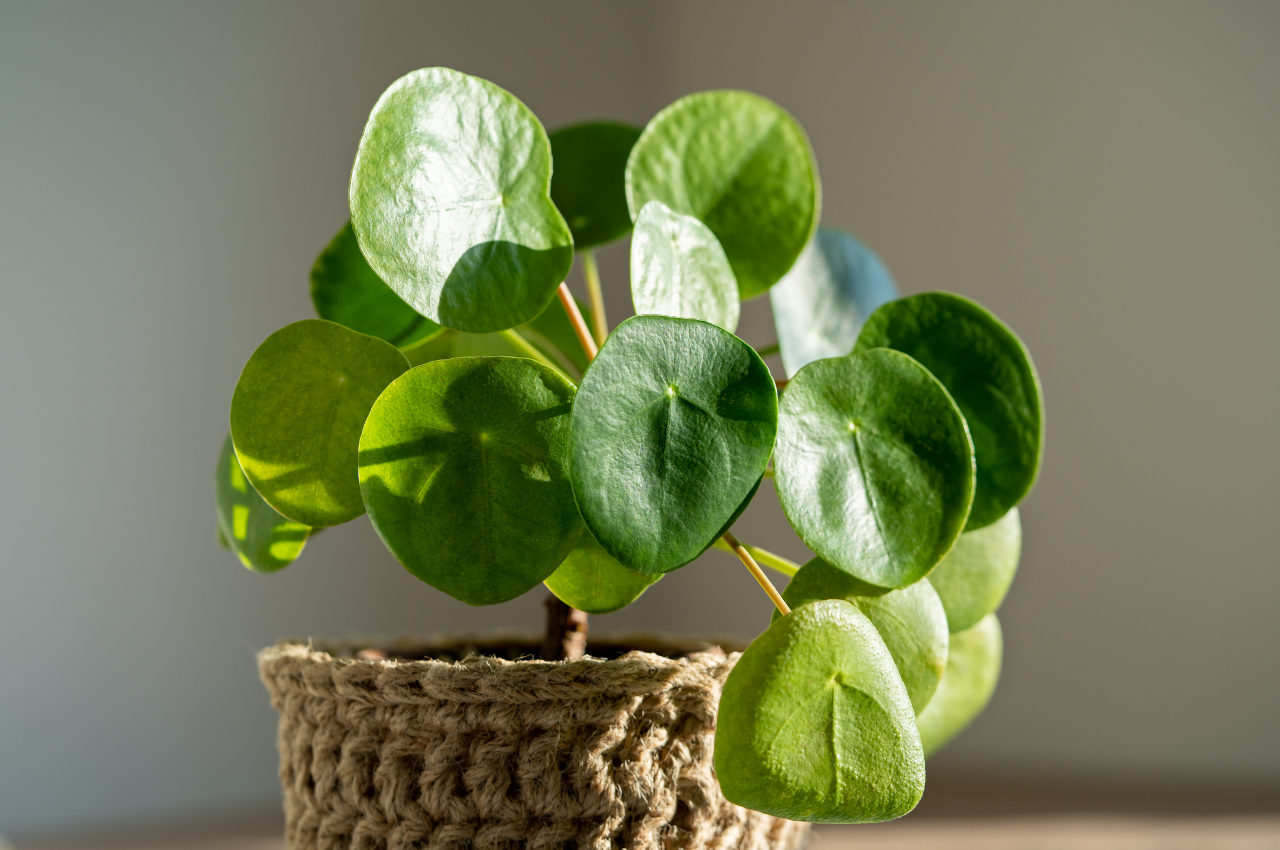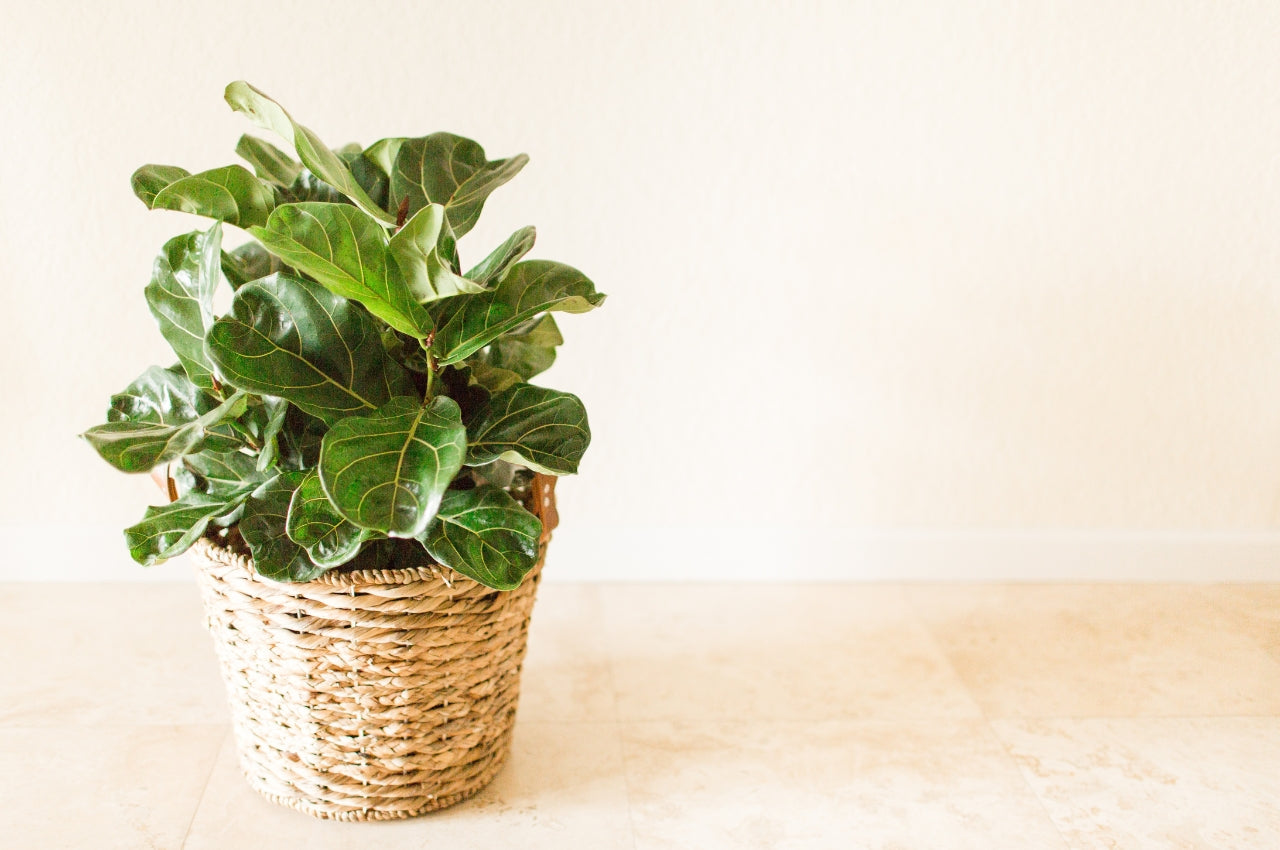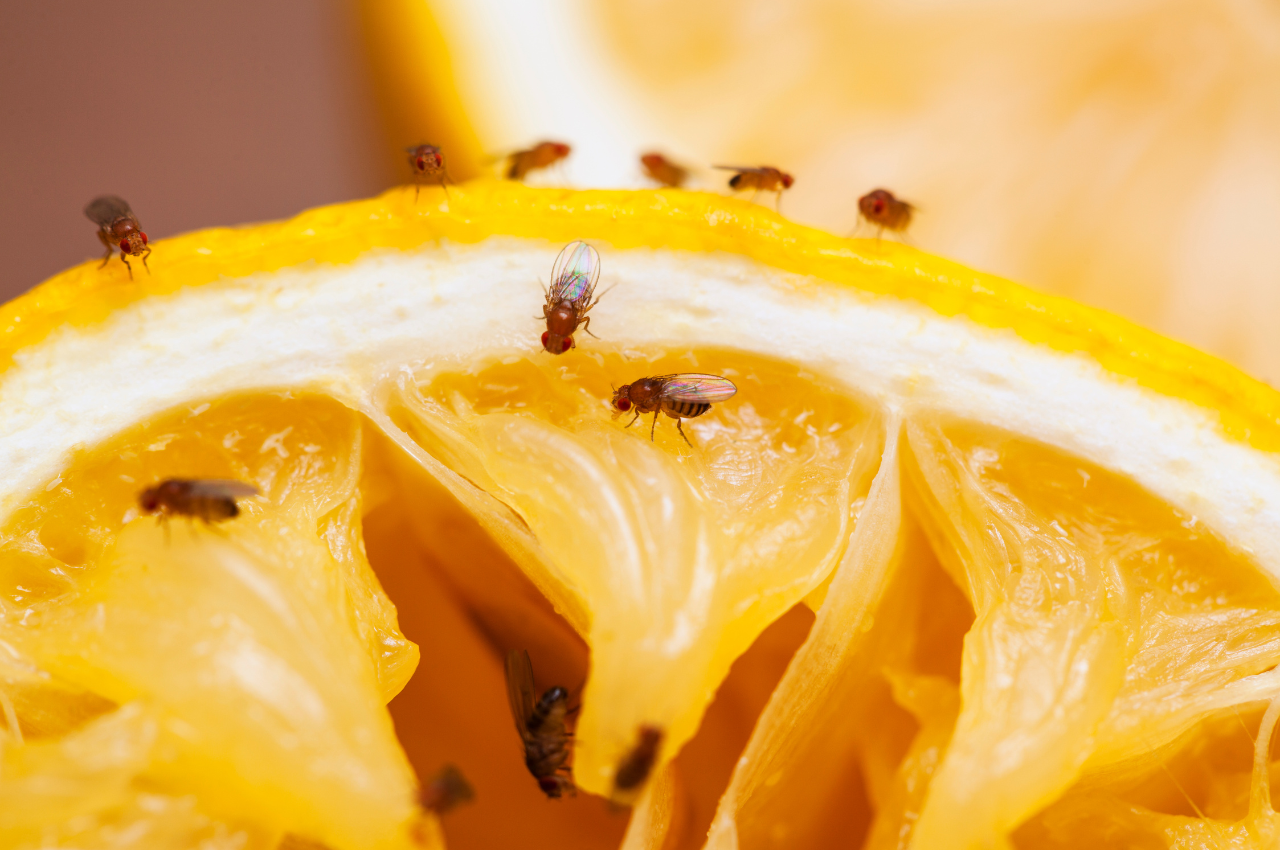Whether you’re a first-time owner or a seasoned plant mom/dad, it definitely pays to know the common problems that can affect the Chinese Money Plant before bringing one home.
Pilea peperomioides, also called the Chinese Money Plant or UFO Plant, is usually a hardy species, but as with any other living thing on Earth, it may experience issues from time to time. The good news? Most of its problems are easy to fix, as long as you can recognize the symptoms early.
Below are some of the most common problems and the symptoms that can help you identify them:
Leaf Drop
The Chinese Money Plant is loved for its beautiful, round, dark green leaves. So, when yours starts dropping more leaves than usual, it’s understandable to feel worried.
Like any plant, your CMP will naturally drop older leaves as part of its growth cycle. Seeing one or two leaves fall occasionally is completely normal and nothing to stress about. However, it becomes a concern when the plant begins losing leaves more frequently or at a faster rate than expected.
Leaf Drop and Overwatering
Overwatering is one of the most common mistakes indoor plant owners make—and it’s also the leading cause of leaf drop and several other issues.
Pilea plants are particularly sensitive to excess moisture. While they enjoy evenly moist soil, they’re also prone to root rot if the soil becomes waterlogged. Even if you’re not watering too frequently, poor drainage can trap excess water and cause the same problem.
So how does overwatering harm a plant? Roots sitting in overly wet soil lose access to the oxygen they need to function. Without oxygen, the roots begin to die, and the damage worsens the longer the soil stays saturated. As the roots rot, they can no longer deliver nutrients effectively throughout the plant, which is why the leaves eventually start to fall.
Leaf Drop and Underwatering
Underwatering can also cause leaf drop, as the plant tries to conserve moisture. However, overwatering is still the more common cause. Nutrient deficiency and low light can also contribute.
How to Fix Leaf Drop
- Pause watering until the soil dries completely.
- If you suspect root rot, gently remove the plant from its pot.
- Trim mushy or black roots and remove dying leaves.
- Let the plant air out on a rack before repotting.
- Improve drainage by adding more holes or switching to a well-draining soil mix.
- If you see fungal growth, use a new pot and fresh soil.

A cherry wood Cantilever Side Table featuring a potted Chinese money plant on top.
Curling Leaves
Curling leaves can happen for several reasons, and the direction of the curl often reveals the cause.
- Curling inward or cupping. When the Chinese Money Plant leaves curl inward, inadequate moisture (and humidity) is likely the cause. Too much sunlight could also cause the leaves to curl this way to protect themselves from scorching.
- Curling downward or forming domes. This is usually a sign of overwatering. As the roots rot, the leaves become limp, unable to hold their structure. Low lighting can also lead to reduced evaporation and, as a result, curling.
Sometimes, new leaves will appear slightly curled before flattening out as they mature. If the curling only affects fresh leaves, there is no need for concern.
Brown Spots on Leaves
Like many issues that affect the Chinese Money Plant, brown spots can stem from a variety of causes. It’s important to note that we’re referring to sudden brown splotches that appear on otherwise healthy leaves—not the gradual browning or natural aging that leads to leaf death.
Here are the most common causes of brown spots on Pilea leaves:
Overfertilization
Too much fertilizer can create fertilizer burn, which may appear as brown splotches on your Pilea’s leaves. Always follow recommended dosages. If you’ve recently repotted your Pilea, dilute fertilizer before applying.
Sunburn
Pilea naturally thrives in bright light but not direct sunlight. Overexposure to sunlight, especially when direct, may lead to the appearance of both yellow spots and brown patches on the leaves.
Cold
Winter temperatures can sometimes drop too low for your Chinese Money Plant, especially if it’s positioned near a drafty window. Cold exposure often leads to scarring on the leaves, which appears as raised, brownish lesions. If you start noticing these marks, check the surrounding temperature. Your plant may simply need a warmer spot.
Pests
Brown patches on your Chinese Money Plant’s leaves could also result from pests. Pests that feed on sap, like mealybugs, harm the leaves. They leave spots that typically start as yellow spots and then turn brown. Compared to the brown splotches caused by sunburn, spots from pests are usually much smaller.

White Spots on Leaves
If you see white sand-like grains on the underside of the leaves, there's usually nothing to worry about. Unlike most of the issues in this post, white grains on a Chinese Money Plant’s leaves are pretty harmless.
The white grains are mineral deposits from the leaves. You can easily remove them by gently wiping the leaf, or you can simply leave them alone. If they bother you, try using filtered water instead of tap water.
Woolly white spots, on the other hand, may mean a different problem. If they appear on crevices and leaf bases, they’re most likely mealybugs.
Soft and Mushy Trunk
Even though it is soft, the main trunk of your Chinese Money Plant should never be so soft that it’s mushy. The Pilea’s upright shape depends on this trunk, which, of course, is the conveyor belt for water and nutrients to its other parts. If it's mushy, the damage is severe, preventing it from performing its primary function. With a mushy trunk, the rest of the plant may die.
The softness of the trunk is most likely caused by excessive water. When excessive moisture goes unchecked for an extended period, it starts to cause rotting on the main stem, which is typically not used to too much moisture. Fungi that cause root rot could also spread to the stem, causing it to decay.
Yellowing Leaves
Another common issue caused by excess moisture is yellowing leaves. If leaves turn yellow and become droopy simultaneously, you’re most likely overwatering your Pilea, or water cannot drain properly from the pot.
When most leaves change to yellow, it indicates root rot. This means you need to repot the plant to save it. There are also other causes of yellowing leaves, which are:
- Nutrient deficiency. This is likely the cause if your plant has been in the same pot for a long time without soil replacement or fertilizer.
- Overfertilizing. Too much fertilizer tends to “burn” your Pilea. Before the color turns brown, the patches on the leaves may start as yellow.
Leggy or Stretched Stems
Poor lighting conditions cause your Chinese Money Plant (and other plant species, too) to grow leggy stems. When your plant doesn’t get enough sunlight, it tends to search for a better way to get it. As it grows this way, constantly reaching for more access to sunlight, its stems stretch out, and its entire structure adjusts accordingly.
We bet that when your precious CMP was young, it was short and compact with leaves growing in a rounded pattern. Understandably, you want to keep it this way. So, if you notice that your indoor Pilea's stems are stretching out, move the plant near the window. It should ideally be exposed to bright but indirect light throughout the day.



Leave a comment
This site is protected by hCaptcha and the hCaptcha Privacy Policy and Terms of Service apply.